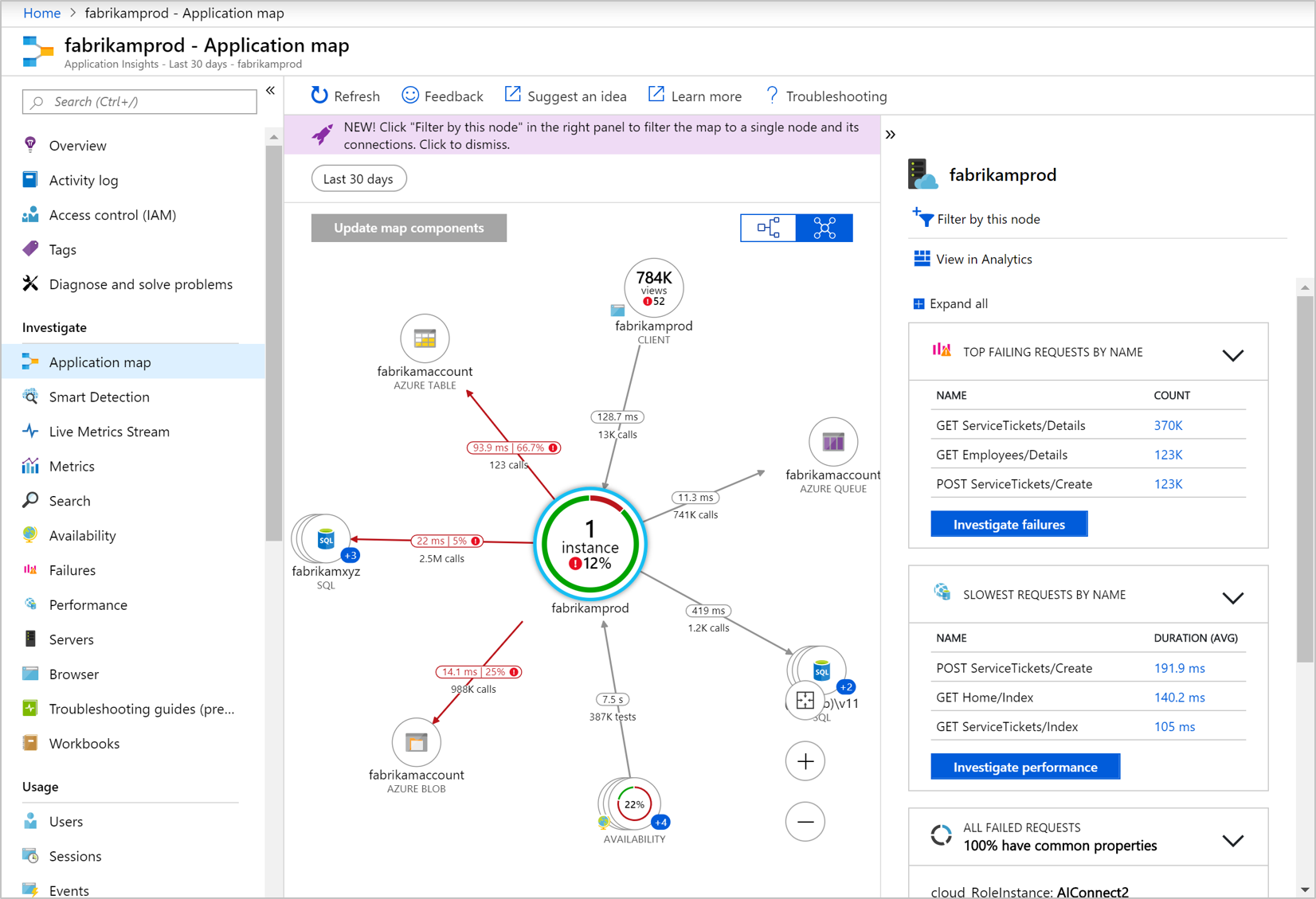

Some parameters can be provided using environment variables, instead of setting them directly in metadata.
Azure app insights password#
activeDirector圜lientPassword - Password of the Active Directory client password.The client must have Monitoring Reader permissions for the Application Insights instance. activeDirector圜lientId - Id of the Active Directory client.This is a GUID that can be retrieved from the Application Insight’s API Access blade in the Azure Portal. applicationInsightsId - Id of the Application Insights instance to query.metricAggregationInterval - Collection time of the metric in format "hh:mm".(Some common aggregation methods are avg, count, sum, min, and max) The az monitor app-insights metrics get-metadata command can be used to determine which methods apply to a given metric. The aggregation methods vary from metric to metric. metricAggregationType - Aggregation method of the Azure Application Insights metric.Learn more about activation here.(Default: 0, Optional, This value can be a float) activationTargetValue - Target value for activating the scaler.targetValue - Target value to trigger scaling actions.Use the Azure Command Line Interface to run az monitor app-insights metrics get-metadata to see a list of available metrics. metricId - The name of the Application Insights metric to query.tenantId - Id of the tenant that contains the Azure resource.This scaler is backed by the Azure Application Insights REST API.

Set to `false` the scaler will return error when null values are discovered Set to `true` to ignore any errors with data extraction from a successful query. IgnoreNullValues: true # Default is `false`. # Required when cloud = Private appInsightsResourceURL: MetricId: "customMetrics/example-metric" targetValue: "1.5" activationTargetValue: "5.5" activeDirector圜lientIdFromEnv: CLIENT_ID_ENV_NAME # Optional, can use TriggerAuthentication as well activeDirector圜lientPasswordFromEnv: CLIENT_PASSWORD_ENV_NAME # Optional, can use TriggerAuthentication as well applicationInsightsIdFromEnv: APP_ID # Optional, can use TriggerAuthentication as well tenantIdFromEnv: TENANT_ID` # Optional, can use TriggerAuthentication as well # Optional (Default: AzurePublicCloud) cloud: Private MetricFilter: cloud/roleName eq 'role_name' MetricAggregationTimespan: "0:1" metricAggregationType: avg


 0 kommentar(er)
0 kommentar(er)
